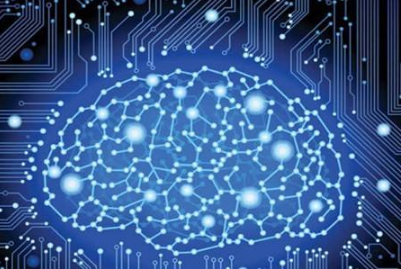Researchers at the University of Pittsburgh in the United States have developed a graphene-based synapse that can be used in a large-scale artificial neural network similar to the human brain. Since the 1950s, digital computing has made almost all forms of analog computing obsolete. However, there is still one exception-the human brain, which can rival the computing power of the most advanced electronic devices. Digital computers live in a world of 0 and 1. They perform tasks in sequence and execute the various steps of the algorithm in a fixed order. The human brain is a dense network of neurons. Each neuron is connected to tens of thousands of neurons and continuously transmits information back and forth through synapses. Every time information is exchanged, the brain regulates these connections, constructs effective pathways, and directly responds to the surrounding environment. A research team from the Swanson School of Engineering at the University of Pittsburgh in the United States has developed an "artificial synapse" that processes information in a way that is different from digital computers, and is an analog method that mimics the human brain to complete tasks. The researchers published the results in the new issue of the internationally renowned journal "Advanced Materials". "The brain has the characteristics of simulation and massive parallelism, which partly explains why humans can beat the most powerful computers in higher-level cognitive functions, such as speech recognition or pattern recognition in complex and changeable data sets. "The researchers pointed out. Now there is an emerging field called "neural computing" that focuses on the design of computational hardware inspired by the human brain. The research team used the two-dimensional honeycomb configuration of carbon atoms to construct graphene-based artificial synapses. The conductivity of graphene allows researchers to precisely adjust its conductance, which is the advantage of synaptic connections. Graphene synapses exhibit excellent energy efficiency, just like biological synapses. In the new round of artificial intelligence recovery, computers can already replicate the brain in many ways, but multiple digital devices are needed to imitate an analog synapse. The human brain has tens of trillions of synapses to transmit information, so it is obviously impossible to build the brain with digital devices, or the scale required is too large. The research team at the University of Pittsburgh provides a possible way to implement large-scale artificial neural network hardware. According to the team, artificial neural networks based on complementary metal-oxide semiconductor (CMOS) will always be limited in terms of energy efficiency, scalability, and storage density. "We have proposed a new device concept for synaptic electronics, which has analog characteristics, is energy-saving, scalable, and is suitable for large-scale integration." The researchers said, "It seems that our graphene synapse currently meets all these requirements. " Due to the inherent flexibility and excellent mechanical properties of graphene, graphene-based neural networks can be used for flexible wearable electronic devices, realizing "Internet edge" computing. The Internet edge refers to computing devices such as sensors that can contact the real world. "Even if we only realize the most basic intelligence in wearable electronic devices and sensors, we can use smart sensors to track health information, provide preventive care and timely diagnosis, monitor plant growth, discover potential pests, and adjust and optimize manufacturing processes. Improve the total productivity of our society and improve the quality of life." The researcher said. A large number of technological breakthroughs are still needed to develop artificial brains with functions that simulate human brains. Researchers need to find the right configuration to optimize these new artificial synapses. They need to make this synapse compatible with other devices to build a neural network, and they need to ensure that all artificial synapses in a large-scale neural network work in exactly the same way. Despite these challenges, the researchers expressed optimism about their research direction. "We are excited about the current progress, because it may make energy-efficient neural computing hardware a reality, and the current neural computing is done in a cluster of high-energy graphics processing units (GPU). Our artificial synapses It has the characteristics of flexibility and low energy consumption, making it a suitable choice for any type of artificial intelligence equipment, which will bring innovative changes to our lives, even larger than the digital revolution we have seen in the past few decades. " Zysen provides a wide range of power dividers (coaxial splitters) 2 Way, 3 Way, 4 Way, 6 Way, 8 Way or 12 Way port designs. Narrow band and ultra-broadband designs ranging from 0.5 MHz to 50 GHz. connectors with 2.92mm, BNC, N,7/16 or SMA connector types, some regulars types are in stock, others 3 weeks fast delivery time, Power Dividers,Power Combiners,Rf Power Splitter,Rf Power Divider Chengdu Zysen Technology Co., Ltd. , https://www.zysenmw.com
RoHS and REACH compliant.
Pls. don't hesitate to contact us with a quote(sales@zysentech.com)